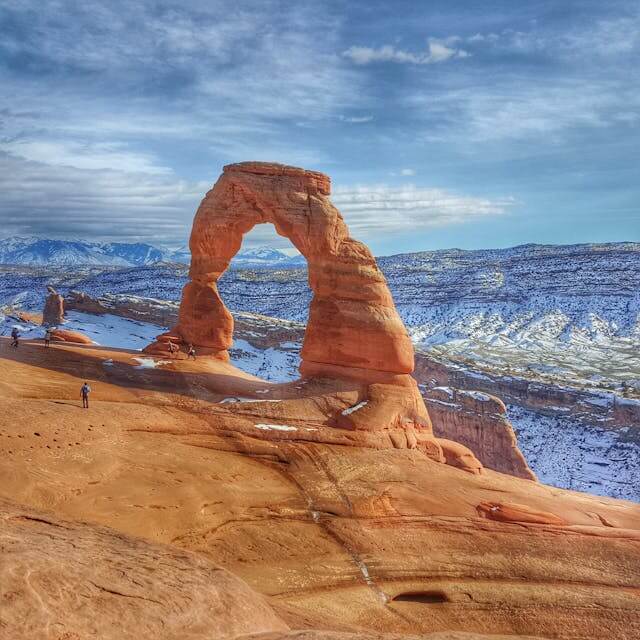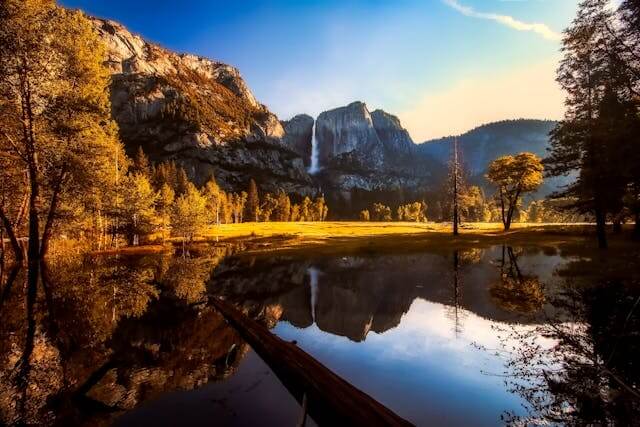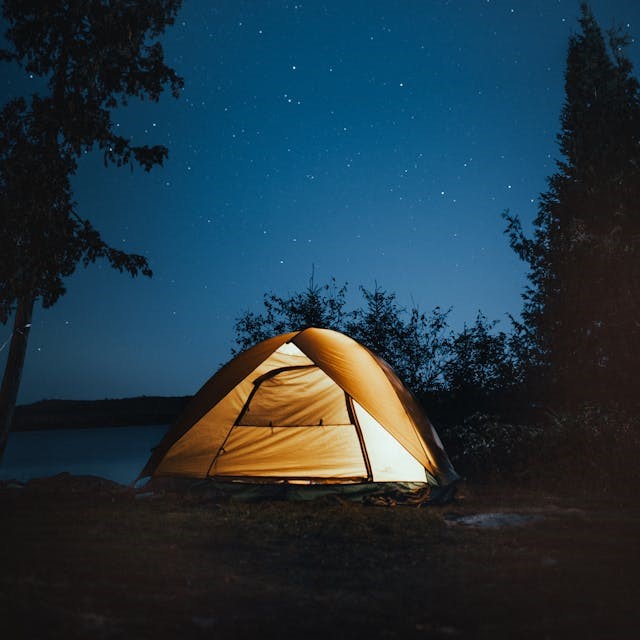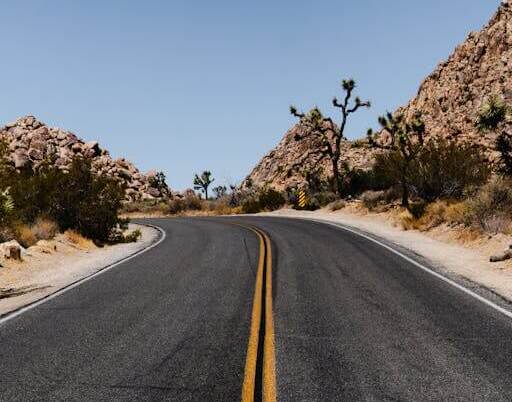Yellowstone… Everglades National Park… Zion National Park…
From coast to coast, the United States has so many incredible natural wonders. You’ll find beautiful mountain ranges, dense forest trails, unique rock formations, and scenic vistas that are all worthy of exploring.
Organizing a trip with a large group for a trip to one of the Nation’s many parks can be difficult. There are tons of considerations to make while organizing your trip — including lodging accommodations, entrance fees, packing, and so much more.
Before you hit the open road, it's essential to do a little research and ensure a smooth and enjoyable trip. This guide is here to help you navigate through how to book your charter bus and have the best time visit any US national park. Price4Limo has served travel groups for over 13 years and routinely serves the entire US NPS.

Know Before You Go
Before you even think about booking a charter bus rental, there are a few things to consider about traveling to and from a national park.
QUICK TIPS:
- Many parks have limited access to cell phone reception, so be sure to download maps and plan ahead of time.
- If you’re traveling with a group, communicate your itinerary to everyone to ensure everyone is on the same page.
- Most national parks don’t even charge an entrance fee – you can see which ones do here.
- Admission for parks that do charge an entrance fee ranges from $5 to $35, usually good for up to seven days for an entire carload of people.
- You can make online reservations on this page here.
- If you’re traveling with a large group, splitting into separate cars can get pricey. Consider opting for a charter bus rental to save money on entrance fees. You’ll also find that renting a charter bus is often cheaper than purchasing plane tickets for each person in a large group.
Choose the Right Time to Visit National Parks

National parks are beautiful any time of year, but if you’re traveling with a large group, consider visiting during the park’s off-season. Parks like Yosemite and the Grand Canyon are exceptionally busy during peak travel season in the summer. You’ll be faced with more traffic, a higher chance of sold-out tours and campgrounds, and more difficulty finding parking for a large vehicle like a charter bus.
The shoulder season (late April through May, and September through early October), which is just before or after peak travel times, is often a good time to visit a national park. For example, if you’re planning to visit a national park in the Southwest like the Grand Canyon, consider visiting in April or October. Temperatures are cooling off from the summer heat, crowds are smaller, and there’s less of a chance of sold-out tours and lodging.
Book National Park Stays Ahead of Time

When it comes to traveling to national parks, it’s highly recommended to plan ahead. It’s best to reserve any hotel rooms, cabins, campgrounds, tours, and park passes weeks or even months in advance. Popular campgrounds and tour events can quickly fill up, especially during peak tourist seasons like summer. It’s important for larger groups to book their accommodations early to avoid being stuck at the last minute with a limited selection of lodging options. You may find yourself needing to book several hotels or campgrounds if your group surpasses the capacity of some lodging spaces.
For example, if your group is planning a road trip along the Blue Ridge Parkway, you’ll likely be staying overnight at hotels or lodges, as camping options are limited along this famed highway. You may decide to stay at the Peaks of Otter Lodge on a trip through Virginia or at the Pisgah Inn on a trip through North Carolina, but these hotels can easily fill up months in advance.
If your group is opting to camp at national parks with numerous campgrounds, like Yosemite, Rocky Mountain National Park, or Joshua Tree— you’ll need to make reservations through www.recreation.gov. There are over 1,000 campgrounds within the National Park System and reserving online can save your group time and stress.
Bring the Proper Gear
National parks are about embracing the great outdoors. This means hiking trails through forests, rocky mountain climbs, and plenty of exploring, whether by foot or by vehicle. Dressing for the occasion is one of the first things to consider when planning your trip. Comfortable and weather-appropriate clothing is essential, as you’ll be spending a lot of time outside. We’d recommend long-lasting pieces like travel-friendly pants, athletic wear or shorts that are durable and comfortable to hike in. Not only will you be walking a lot, but you’ll also want to avoid being stuck in the heat. Some travelers may also consider lightweight rain gear, a warm jacket for unpredictable weather, and hats and sunglasses.
If your group is planning to participate in water-related activities like tubing or canoeing, remember to pack a swimsuit, water shoes, and a dry change of clothing for the journey back to your hotel or campground. Be sure to also pack any necessary medications, as well as sunscreen and bug repellent for everyone in your group.
Traveling by charter bus means you’ll have plenty of storage space for oversized items like tents, coolers, camping equipment, and more. Smaller personal items can be stowed in the overhead storage compartments on the bus. You can learn more about the storage space on each types of buses here.

Arrival at the Park
You and your group have made it to the park, but how do you get in? Many of the national parks are easy to get to from nearby cities, like a 35-minute drive from Philadelphia to the Valley Forge National Historical Park, a 45-minute drive from Washington D.C. to Mount Vernon, or an hour from San Diego to Joshua Tree National Park. Although these parks are easily accessible from large cities, their natural environments can limit accessibility for oversized vehicles. And during peak travel times, you’re likely to encounter busy roads and packed parking areas.
That’s why you should always consider how your charter bus will get to, around, and from the park. Most of the parks aren’t easily accessed via public transportation, making a charter bus rental one of the best ways to travel with a group. You’ll want to plan your park arrival strategy ahead of time to ensure a smooth and organized experience.
Park Entry and Fees
Although each park may have variances in their policies, consider these common rules that you’ll find throughout the National Park System. While entrance fees, reservations, and permits are often geared towards individuals visiting in personal vehicles, we’ll cover how these will translate when traveling with a large group in a charter bus rental.
- Reservations and Permits. You’ll need to make reservations or obtain permits for entry, parking, or any specialized group activities or lodging. These vary from park to park, so be sure to visit the park’s official website to ensure that your reservation or permit is organized at least weeks or even months in advance. If you’re traveling with a scout troop, you may need to request a permit for activities like camping. Educational groups will also need to make a reservation in advance for guided programs at museums and other locations in the park.
- Entrance Fees. Some national parks require an entrance fee to get in. For vehicles entering the parks, this fee will vary between $15 to $35. Groups traveling by charter bus should inquire about specific rates for oversized vehicles or group entry fees for each passenger. National parks also offer an “America the Beautiful” pass, which costs $80 annually and grants free access to all national parks.
Bus Parking and Access
While organizing your park entry, you’ll also need to know where your bus can go once inside. Large vehicles have limited access inside the parks due to their size and to preserve the beauty of each park. Coordinate with your bus driver about the following limitations so they’ll know where they can park and unload passengers.
- Parking Areas. Check the park’s official website or contact the park rangers to find out where charter buses are allowed to park. There are generally designated parking areas for oversized vehicles and buses near each park’s visitor centers and popular attractions. The most convenient parking areas will often be near park entrances, but these tend to fill up fast during peak season. If your group intends to visit the park on a busy weekend or holiday, plan to arrive as early as possible or reserve your parking ahead of time online.
- Drop-Off and Pickup Points. Similar to parking, charter buses and minibuses have designated staging and loading areas. Be sure you understand the difference between pickup points and parking areas at your national park of choice. Pick up points are generally located near visitor centers and major attractions to make the park’s logistics more efficient during busy visiting times, but these areas are only designed for short stops. These areas may also have a time limit, usually between 15 to 30 minutes. Your bus can unload your group at a designated pickup point and then park the bus at a proper parking area.
Road Restrictions
National parks are made up of natural environments that vary greatly in their geographical makeup. With steep climbs, winding mountainous paths, and dense foliage, driving can get difficult at times. Navigating a large charter bus through these roads might not even be possible. So keep these restrictions in mind when planning your trip.
- Road Conditions. Not every road will be well-suited for a large charter bus or even a minibus. This can include low bridges, weight restrictions, sharp curves, and other potential road hazards. If you are unsure, contact the park’s offices or consult a park ranger for directions that can accommodate your charter bus rental.
- Seasonal Closures. Some popular routes may be closed for certain parts of the year due to weather. This can be for a variety of issues, like snow and ice during the winter or flash flooding during the spring and fall. Other road closures occur to protect delicate areas of the park, like for protecting animal habitats or due to nearby construction projects. Each park’s website will list all ongoing road closures, so be sure to check before you begin your trip. If you’re unsure of something, contact the park’s offices or rangers.
So You’ve Made It to the Park, What Next?
Congratulations! The hardest part of your trip is now over. You’ve successfully organized your itinerary and booked lodging, have the proper gear, booked group transportation with Price4Limo, and even figured out where to park! Now that you’re finally at the park, how do you make the most out of your time?
Here’s a few helpful suggestions to optimize your group’s trip to the park:
Plan Your Time in the Park
A good first step is to plan out what attractions you want to see while you’re there. Check your park’s website to see a list of popular attractions and things to do, as well as an event calendar. National parks aren’t static, and offer different things at different times of the year!
You can find things like ranger-led tours, wildlife viewing opportunities, and events that celebrate local history, culture, and art, to name a few. National parks are also known for hosting seasonal programs. Your group may even want to time their visit around a special festival or celebration, like a folk music celebration in the Blue Ridge Parkway or the famed Cherry Blossom Festival in Washington D.C.’s Tidal Basin, which is part of the National Mall and Memorial Park System.
Camp or Consider a Night in a Lodge
If you’re looking to immerse yourself in nature during your visit, there’s no better way to do so than camping. Many National Parks offer campgrounds for visitors to stay overnight or longer, though they can often get crowded in the summer months and on weekends. If you’re traveling with a large group, you’ll also want to make sure you book your campground stay well in advance. Many of the campsites are only built to accommodate a few people, so you may find yourself having to reserve multiple spots for your group.
Not everyone enjoys being stuck in the elements, though. Those looking for a more comfortable alternative can always stay overnight at park lodges or nearby hotels. The Peaks of Otter in Virginia, for example, offers rooms at a lodge, as well as several cabins to choose from. The Shenandoah National Park Lodge in Virginia is another great place to enjoy the park and experience nature without being in nature.
Make Friends With The Park Rangers
Park rangers are your go-to resources for just about anything! They not only make sure the park is running smoothly, but they can also provide your group with tips on how to get around, share stories about the park’s history, suggest great trails to check out, and answer any questions you may have.
If you encounter an unexpected mishap, park rangers will be there to assist you with problems like if you spot a dangerous animal. They’ll even have expert knowledge on local weather and can warn you about potential issues.
Stop by the Park Visitor Center
The park visitor centers have plenty to offer guests beyond restrooms, gift shops, and a place to get out of the elements for a little while. Here, you’ll find a wealth of knowledge about the park’s history, geography, and special programs, including educational exhibits, ranger-led tours, and films, as well as information on ranger-lead tours.
Ranger-led tours are a wonderful way to learn about the park in an interactive and immersive way. These tours can vary from walking trails about the local foliage and wildlife to historic tours of the park’s buildings and landmarks. Tours like The Enslaved People of Mount Vernon Tour in Virginia offer an insight into lesser known historical elements of certain parks, like those associated with plantations.
Find Any Special Programs
Many national parks offer programs that are tailored to specific groups. The National Mall and Memorial Parks has educational programs available to schools and youth organizations, like tours about the city’s history and the people who lived there. The Junior Ranger Program is perfect for groups of young travelers and includes scavenger hunts and park challenges to keep the kiddos entertained while exploring.
You’ll also find specialized programs geared toward visitors with disabilities. The National Mall and Memorial Park system, for example, offers tours and guides in sign language for visitors who are hard of hearing. If your group has individuals that may require specific accommodations, it’s best to call the park ahead of time to inquire about these programs.
Be Respectful of Wild Animals
Don’t touch or pet the animals! As tempting as it may be to pet a wild animal, you must remember that these animals are not domesticated. Wild animals like bears, moose, snakes, and even deer, can quickly become dangerous when they are approached. Not only will this put you and your group at risk, but this could also endanger the animals. This rule applies to all national parks, even those in urban areas like the National Mall and Memorial Parks system. Don’t let a family of ducks or geese fool you—they will chase you if they feel threatened!
Take advantage of your private charter bus if you encounter a dangerous animal. Your bus rental can serve as a place to observe wildlife safely without putting yourself or your group at risk.
During the Trip
As you travel to your national park, you’ll want to enjoy your charter bus ride! The length of your trip can vary between one to several hours, depending on the park’s location. For example, the drive to Yosemite National Park from San Francisco can take upwards of three hours.
Traveling in a charter bus rental means you can comfortably pass the time with WiFi, TV, reclining seats, bus games and more. Don’t be afraid to relax, stretch out, and enjoy the journey as you head to one of America’s national treasures!
After the Trip
Remember to tidy up! Leaving trash on your charter bus after your park trip may cause unpleasant odors and is inconsiderate to your driver. Each charter bus should have a trash receptacle near the entry doors or behind the driver’s seat to keep trash from piling up on the bus floor.
If your group is traveling with larger items like coolers or plastic bags, we’d recommend having one person gather these at the end of each day to keep them organized. If you spill liquids or food on the bus, clean it up quickly to avoid attracting bugs or causing unwanted smells to linger in the bus’s cabin.
Get a Free Charter Bus Rental Quote
A private charter bus is one of the easiest ways to visit a national park with a group. Price4Limo will help keep your group trip organized and ensure that your travel is efficient, comfortable, and stress-free! Whenever you are ready to book your next National Park adventure, call us at 1-866-265-5479. We’d love to help you find the perfect charter bus rental for your group.